07:48 Relatives of the lily, this plant and Asparagus densiflorus ‘Myers’ are frequently, but incorrectly, called ferns because of their finely divided foliage, which is actually modified stems or branches. 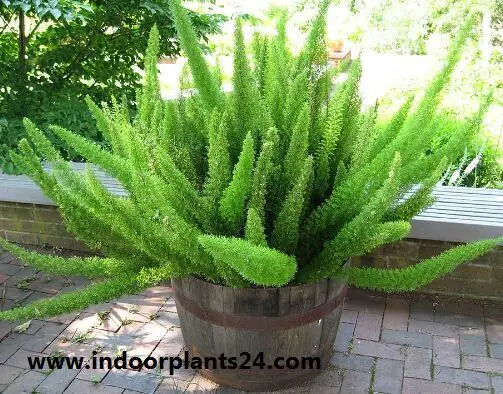
In its natural habitat—temperate savanna and warm temperate forests—Asparagus densiflorus will scramble through and up stronger-stemmed plants, but the two cultivars most often grown indoors make excellent plants for hanging baskets. 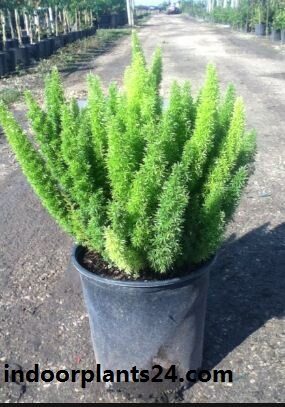 They produce fleshy roots, often with pronounced tubers on them, which store water and see the plants through brief periods of water shortage; the insignificant flowers are followed by reddish berries.
They produce fleshy roots, often with pronounced tubers on them, which store water and see the plants through brief periods of water shortage; the insignificant flowers are followed by reddish berries. 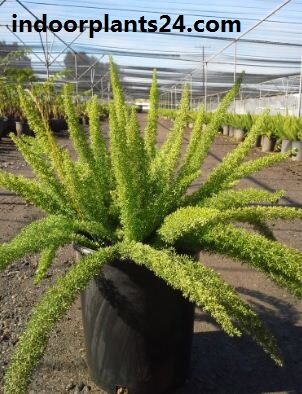 A.d. ‘Sprengeri,’ the emerald-feather fern, with its drooping stems clothed in l-in/2.5-cm-long needlelike “leaves,” makes an excellent trailing plant; a well-grown mature specimen can have a spread of 3ft/90cm.
A.d. ‘Sprengeri,’ the emerald-feather fern, with its drooping stems clothed in l-in/2.5-cm-long needlelike “leaves,” makes an excellent trailing plant; a well-grown mature specimen can have a spread of 3ft/90cm. 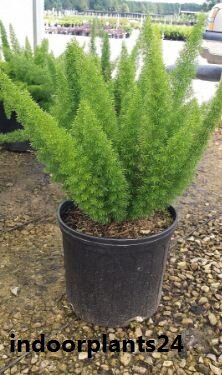 Arguably more attractive is A.d. ‘Myers,’ which has needlelike branchlets arranged around its stems like plumes, hence its common name of foxtail fern.
Arguably more attractive is A.d. ‘Myers,’ which has needlelike branchlets arranged around its stems like plumes, hence its common name of foxtail fern.  Asparagus densiflorus
Asparagus densiflorus
FACT FILE
ORIGIN South Africa.
HEIGHT Stems up to 3ft/90cm long.
POTTING MIX Soil-based. 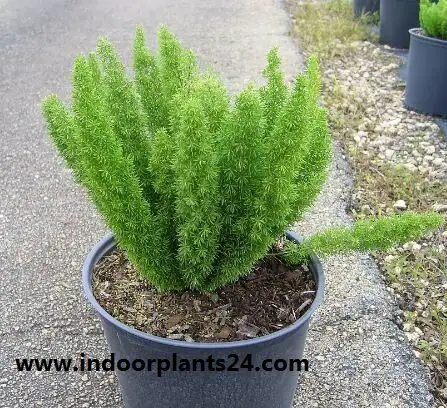 REPOTTING Annually in spring. Leave the surface of the soil well below the rim of the pot; the thick, tuberous roots force the soil up as they grow.
REPOTTING Annually in spring. Leave the surface of the soil well below the rim of the pot; the thick, tuberous roots force the soil up as they grow. 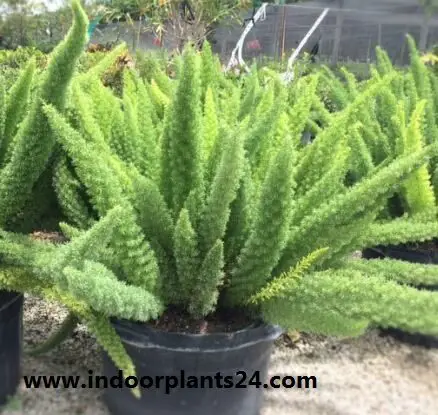 PROPAGATION In spring, divide old overcrowded clumps that have lost their vigor with a sharp knife. Try to retain as many of the roots as possible.
PROPAGATION In spring, divide old overcrowded clumps that have lost their vigor with a sharp knife. Try to retain as many of the roots as possible.  KEEPING PLANTS Asparagus is a long-lived plant; cut out faded fronds to keep the plant looking decorative.
KEEPING PLANTS Asparagus is a long-lived plant; cut out faded fronds to keep the plant looking decorative. 
PLANT CARE of Asparagus densiflorus ‘Sprengeri’ Liliaceae ASPARAGUS FERN
- Bright filtered sunlight; avoid deep shade.
- Minimum winter temperature of 50°F/10°C; normal room temperature at other times.
- Water thoroughly, allowing the potting mix to dry out a little between waterings; water sparingly in winter.
- Feed every 2 weeks from spring to early fall with a standard liquid fertilizer.

- Share
- Share
- Share
- Share
